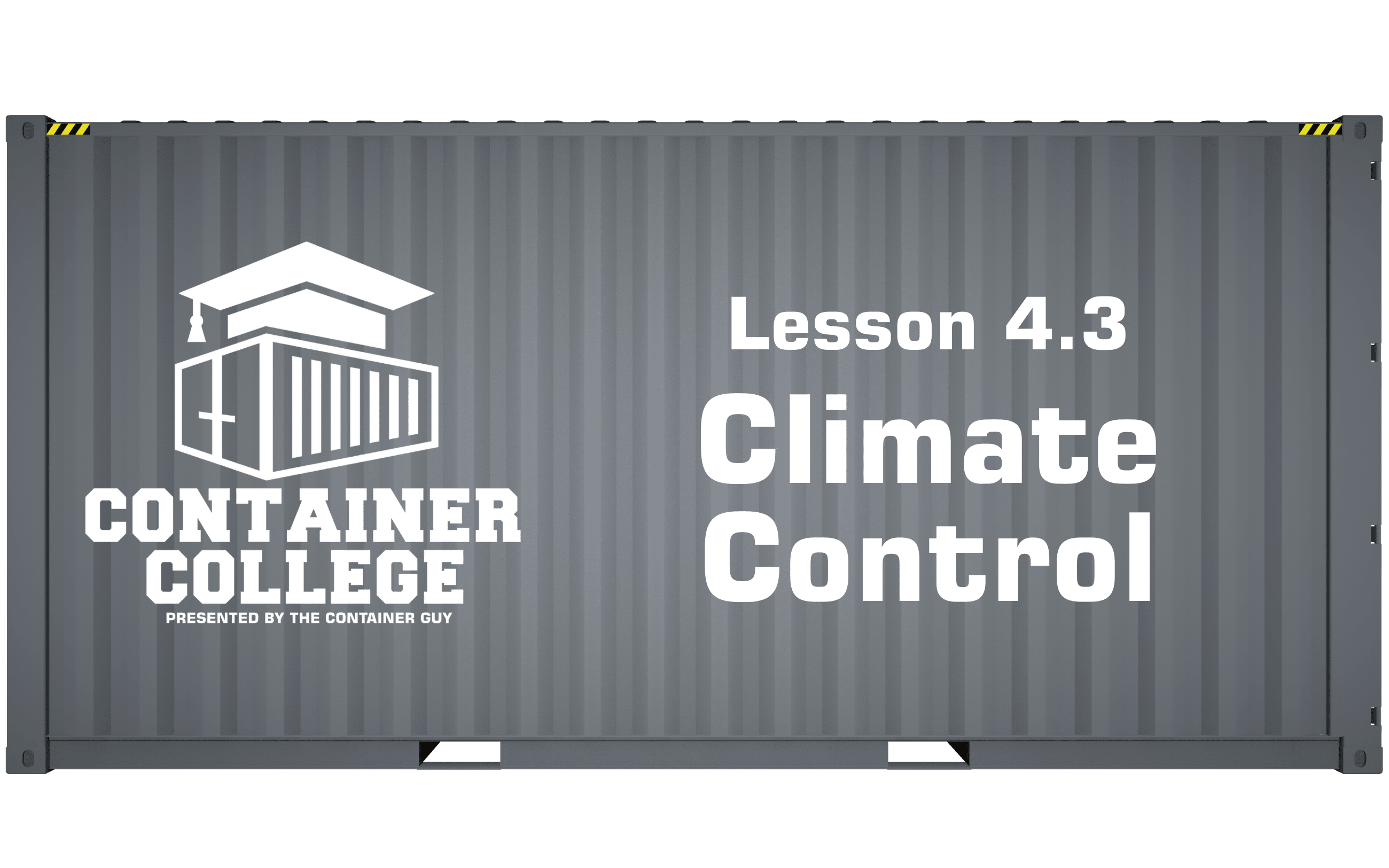
Shipping containers weren’t designed to be lived or worked in; they were built to move cargo across oceans. One of the most important things to consider is climate control.
We've helped thousands of customers transform containers into fully functional structures, and we know how critical it is to get temperature and moisture management right from the start.
This module covers how to control heat, cold, and condensation in your container, plus which products help you do it right the first time.
Why Climate Control Matters
Containers are made of steel, which is highly conductive. That means:
- They heat up quickly in the sun
- They cool down fast at night
- They trap humidity, leading to condensation and mold
- Poor insulation leads to higher energy costs in both summer and winter
Tip: No matter your climate, proper ventilation, insulation, and airflow will make your container more usable, efficient, and durable year-round.
Heating Your Container
Popular Heating Options:
- Electric baseboard heaters – Simple, low-cost, ideal for smaller spaces
- Mini-split heat pumps – Efficient and great for heating + cooling
- Wood or pellet stoves – Good for off-grid builds (but need venting)
- In-floor heating – Ideal for comfort in cold climates
If you're heating your container, insulation and air sealing are non-negotiable. Otherwise, you're just heating the outdoors.
Cooling Your Container
Popular Cooling Options:
- Mini-split AC units – Quiet, efficient, and easy to install
- Window or wall AC units – Great for budget builds
- Passive ventilation systems – Help reduce heat buildup (especially in hot climates)
CMW Product: Big Air 57 Solar Vent
- Solar-powered fan that keeps hot air moving
- Ideal for lined or insulated containers
- Installs easily with no wiring required
Tip: Combine powered and passive ventilation to keep air flowing and reduce internal temperature spikes.
Managing Condensation with Vapour Barriers
Even in dry climates, moisture is one of the biggest threats to a container build. Condensation forms when warm, humid air hits cold steel walls—often behind your insulation, where you can’t see it.
How to Prevent It:
- Install a continuous vapour barrier between your insulation and wall finish
- Seal all seams and joints using vapor-proof tape and caulking
- Use moisture-resistant insulation like closed-cell spray foam or rigid board
- Add ventilation to move moist air out
CMW Product: Steel Stud Framing Bracket Kit
- Allows you to frame container walls without welding
- Supports vapor barrier and insulation layers
- Keeps your wall system clean, efficient, and secure
Best Practices for Climate Control in Containers
- Insulate walls, ceilings, and floors properly
- Add a vapour barrier on the warm side of the insulation
- Use ventilation to prevent trapped humidity
- Choose heating/cooling systems sized for the container
- Seal all windows, doors, and gaps to reduce air leaks
Bonus Tip: If your container is being used year-round, especially in Canada, plan for both heating and cooling. You’ll thank yourself later.
Solutions That Support Climate Control
- Big Air Vents & Solar Exhaust Fans – Promote healthy airflow
- Steel Stud Framing Bracket Kit – Supports insulation, vapor barrier, and drywall or plywood
- Man Doors & Windows – Proper seals and weather stripping included
- Roof & Liner Flashing Kits – Reduce thermal bridging and seal off gaps around openings



